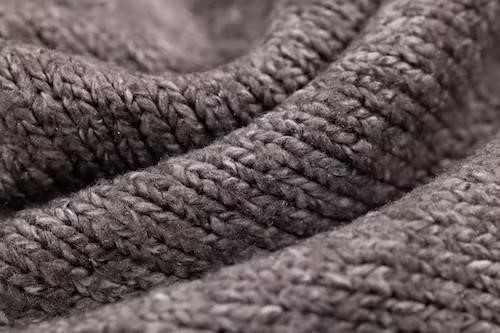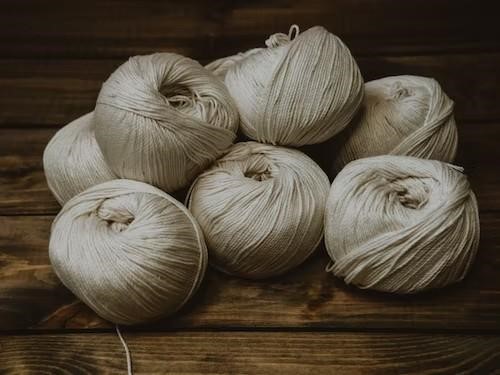
Subscribe To Emails
Subscribe to the YourCotton mailing list to receive updates on new arrivals and promotions (about once every 6 weeks)!

Knit and woven fabrics may look very similar, but they are quite different in their make-up, properties, and uses. Knowing the differences between knit and woven fabric can be highly beneficial when choosing a suitable material for a project or purchase. In this article, we will explore these two distinct types of fabrics – looking at what makes them unique, how to identify one from the other, as well as their respective advantages and drawbacks so you can decide which is better for your specific requirements. Read on to discover everything you need to know about comparing knit vs. woven fabric!
Most knit fabrics are made using an interlock knit process similar to hand-held knitting needles but with larger-scale industrial knit machines. This method employs one long yarn looped into the desired fabric pattern. When viewed closely, the knit can be seen as tiny chains of thread resembling braids.
Under a microscope, the knit pattern looks just like what would be created with manual knitting needles! Generally speaking, knit fabrics come in two variations: warp-knit fabric has vertical loops, while weft-knit fabric has horizontal ones. Fleece knit is a popular example of weft knit fabric and is commonly used in apparel items due to its comfort and warmth.
Woven fabrics are created using the plain weave technique, which involves two sets of threads that cross over and under each other in a pattern. This plain weave technique is the technique most commonly used in looms to create woven materials. While plain weave can be used to make fabrics of all types, including cotton and sheets, it's also possible to use complex weaving techniques like twill and satin weaves.
Compared to plain weaves, these types of fabric create a more interesting texture. In factories, large looms are employed to hold up the warp threads (vertical) and the weft thread (horizontal), which work together in harmony to generate incredible fabrics that look amazing.
Knit fabrics hold an advantage over woven fabrics due to their ability to stretch horizontally and vertically, making them the ideal choice for form-fitting clothing. Woven fabrics tend to have less elasticity and therefore need to be cut "on the bias" to give them a more contoured look.
There are a variety of woven fabrics that are commonly used in garment construction, including twill weave and satin weave. The aesthetics and functionality of woven materials depend on the closure used; without closures like zippers or buttons, woven materials may not fit properly as they will not easily expand. Knitted fabric, on the other hand, can provide a snug fit with minimal structure when cared for properly.
The strength of any fabric depends largely on the type of fiber it contains, but knitted fabrics produce a continuous yarn that can have greater strength than traditional woven fabrics. The structure of the knitted fabric is made with multiple yarns looped together and weft yarns interlocked during the weaving process. This type of formation gives knitted garments a firm fitting elasticity without fraying out as opposed to woven garments where the shape is retained by multiple crossed threads and edges tend to fray easily.
You may think that knit fabric would be the more durable, especially since t-shirts and many workwear are made from knits. But in fact, woven fabrics have much greater durability than their knitting counterparts. This is because when woven fabric goes through wear and tear, it won’t stretch out or pill – which can be a major issue with knit material over time.
Even when exposed to lots of washing and drying, woven fabrics tend to hold their shape better than knit fabrics do. And while some materials demand special care regardless of weaving structure (such as silk), a majority of woven fabrics are more resistant to damage than those made with a knitting technique.

Knit fabrics generally allow for more air circulation compared to woven fabrics because the looped thread construction allows more pathways for air to travel through. Woven fabrics, though they do have some gaps between the crossed threads, still tend to form a more solid barrier between you and the environment.
Not only does the type of material determine breathability but also other factors, such as thread count and weaving or knitting tightness. Finer threads typically offer greater breathability, and thinner weaves or looser knits will also add to the overall comfort level. The actual fabric itself can affect breathability too; naturally, porous materials like cotton feel much more breathable regardless of the structure, while less porous fabrics like polyester may make it harder to stay cool in either a knit or woven form.
Knit fabric usually has a softer feel than woven fabric due to its giving and stretch structure. Ringspun cotton can feel exceptionally comfortable in both its satin-weave and jersey forms. When incorporated with a tight Satin weave, it grants an incredibly plush experience that is hard to beat.
However, when knitted into jersey knit for t-shirts, the same type of Ringspun Cotton renders an unbelievably cushioned touch. By contrast, certain types of weave can leave the fabric feeling stiff and coarse. So while it is true that knit material almost always feels soft to the touch, one should only consider woven fabrics partially - as long as you select materials wisely!
Knit fabric is one of the more comfortable fabrics to wear. It has a forgiving, form-fitting quality that conforms to your body and moves with you, making it an incredibly cozy and luxurious feeling against the skin. On the other hand, woven fabrics can be just as comfortable depending on the type of material used and the style of the garment.
For example, lightweight woven linen or cotton can be pretty comfy, while thicker taffeta or canvas is better for formalwear rather than all-day comfort. In either case, breathability is an essential factor when it comes to finding comfortable clothing!

Knit fabric certainly has an edge in the wrinkle-resistance department. The looped structure and flexibility of the material allow it to move with the environment instead of against it, quickly preventing creasing. On the contrary, woven fabric is often known for its stubbornness in catching and holding a crease, making wrinkles especially tough to avoid! For those curious about why this happens, heat and moisture affect the hydrogen bonds inside the material, making it easier for fibers to change shape, thus creating creases.
A significant distinction between knit and woven fabric lies in thread construction. Woven materials use two separate threads that cross perpendicularly, while knitted fabrics are composed of a single continuous line forming interlocking loops, thus producing a much looser structure.
Knit fabric has remarkable stretchability and breathes well, making it a frequent choice for t-shirts and activewear. On the other hand, woven material is tightly constructed but provides an array of clothing options, from dressy garments to jeans.